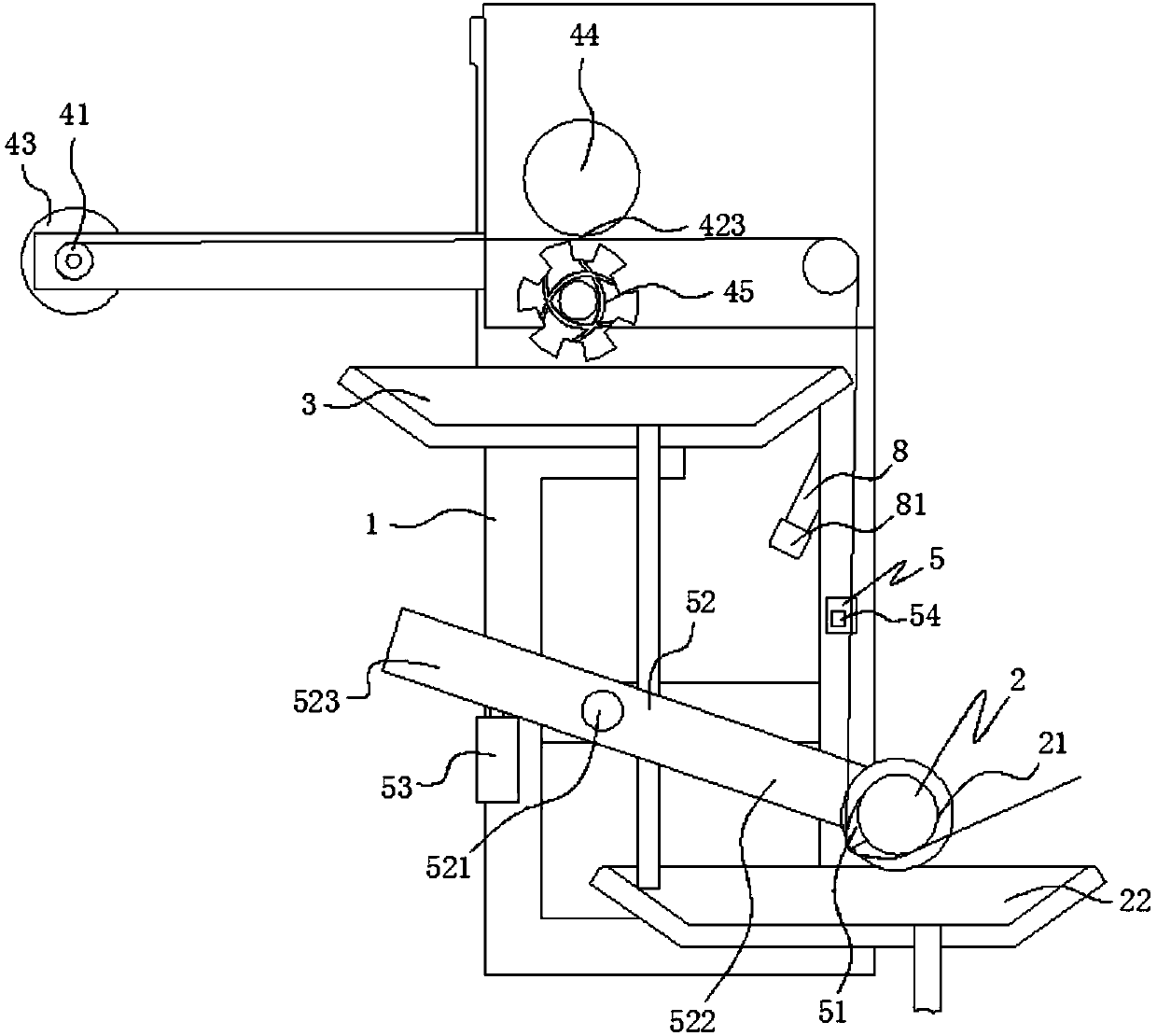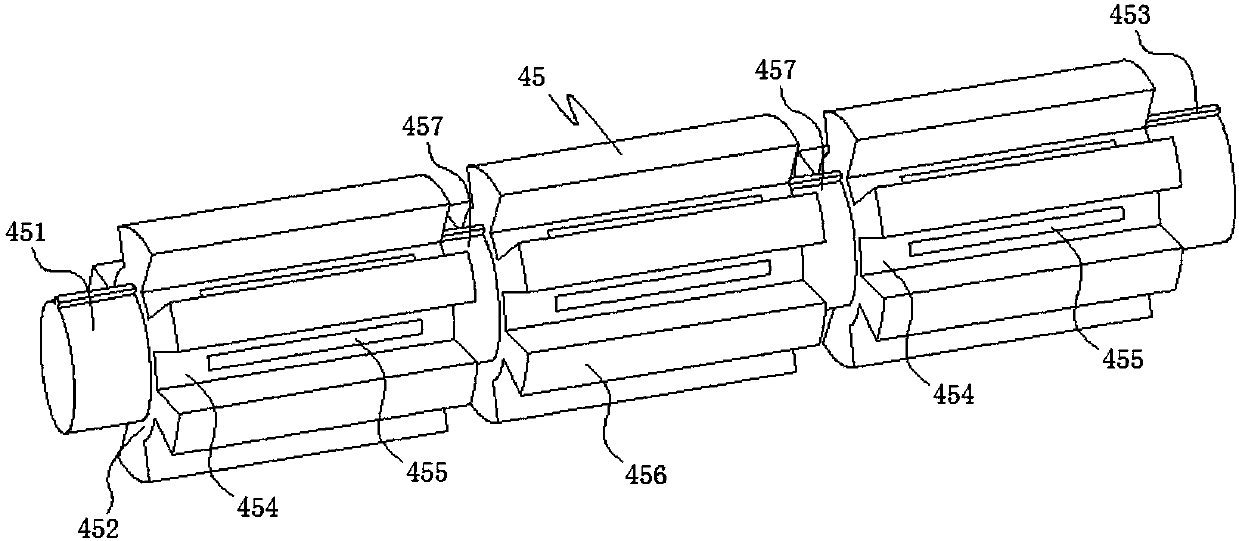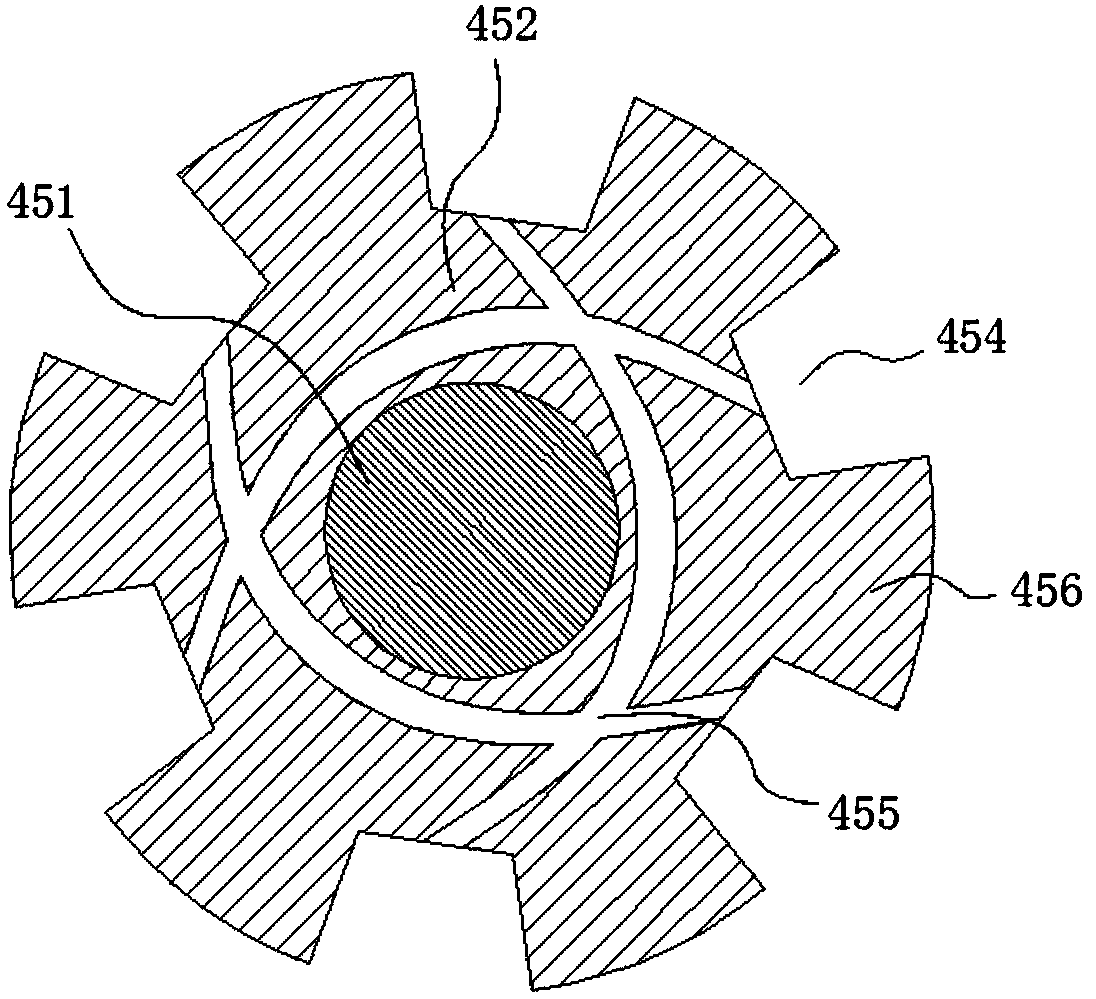A printing and dyeing process having a low decolourization ratio
A technology of printing and dyeing process and decolorization rate, which is applied in the direction of dyeing method, textile material treatment, liquid/gas/steam removal with squeeze roller, etc. It can solve the problems of affecting the working environment of the workshop, low work efficiency, and long drying time , to enhance the effect of squeezing water, improve work efficiency, and improve the quality of fabrics
- Summary
- Abstract
- Description
- Claims
- Application Information
AI Technical Summary
Problems solved by technology
Method used
Image
Examples
Embodiment 1
[0035] A printing and dyeing process with a low decolorization rate, including the following steps: (1) Singeing: lay out the gray cloth to be dyed and sew the outer edges together manually, and then send the sewn gray cloth to the The singeing treatment is carried out in the singeing machine to remove the burrs and hair balls of the gray cloth. The singeing machine is an existing technology and will not be described again; (2) Dyeing: first bleach the cloth, and first wash the gray cloth sent into the bleaching pool, soaked in the bleaching solution, wherein the bleaching solution includes the following components in parts by weight: 10 parts of hydrogen peroxide, 5 parts of hydroxyethylidene diphosphonic acid, 6 parts of ammonium borate, over 3 parts of sodium oxycarbonate; the reaction temperature of the bleaching pool during the bleaching process is 45°C, and the reaction time is 0.8h; after the bleaching is completed, the gray cloth is put into the dyeing pool for dyeing t...
Embodiment 2
[0045] A printing and dyeing process with a low decolorization rate, including the following steps: (1) Singeing: lay out the gray cloth to be dyed and sew the outer edges together manually, and then send the sewn gray cloth to the The singeing treatment is carried out in the singeing machine to remove the burrs and hair balls of the gray cloth. The singeing machine is an existing technology and will not be described again; (2) Dyeing: first bleach the cloth, and first wash the gray cloth sent into the bleaching tank, soaked in the bleaching solution, wherein the bleaching solution includes the following components in parts by weight: 20 parts of hydrogen peroxide, 12 parts of hydroxyethylidene diphosphonic acid, 8 parts of ammonium borate, over 5 parts of sodium oxycarbonate; the reaction temperature of the bleaching pool during the bleaching process is 55°C, and the reaction time is 1.2h; after the bleaching is completed, the gray cloth is put into the dyeing pool for dyeing ...
Embodiment 3
[0048] A printing and dyeing process with a low decolorization rate, including the following steps: (1) Singeing: lay out the gray cloth to be dyed and sew the outer edges together manually, and then send the sewn gray cloth to the The singeing treatment is carried out in the singeing machine to remove the burrs and hair balls of the gray cloth. The singeing machine is an existing technology and will not be described again; (2) Dyeing: first bleach the cloth, and first wash the gray cloth sent into the bleaching tank, soaked in the bleaching solution, wherein the bleaching solution includes the following components in parts by weight: 15 parts of hydrogen peroxide, 8 parts of hydroxyethylidene diphosphonic acid, 6 parts of ammonium borate, over 3 parts of sodium oxycarbonate; the reaction temperature of the bleaching tank during the bleaching process is 55°C, and the reaction time is 1h; after the bleaching is completed, the gray cloth is put into the dyeing tank for dyeing tre...
PUM
 Login to View More
Login to View More Abstract
Description
Claims
Application Information
 Login to View More
Login to View More - R&D
- Intellectual Property
- Life Sciences
- Materials
- Tech Scout
- Unparalleled Data Quality
- Higher Quality Content
- 60% Fewer Hallucinations
Browse by: Latest US Patents, China's latest patents, Technical Efficacy Thesaurus, Application Domain, Technology Topic, Popular Technical Reports.
© 2025 PatSnap. All rights reserved.Legal|Privacy policy|Modern Slavery Act Transparency Statement|Sitemap|About US| Contact US: help@patsnap.com



